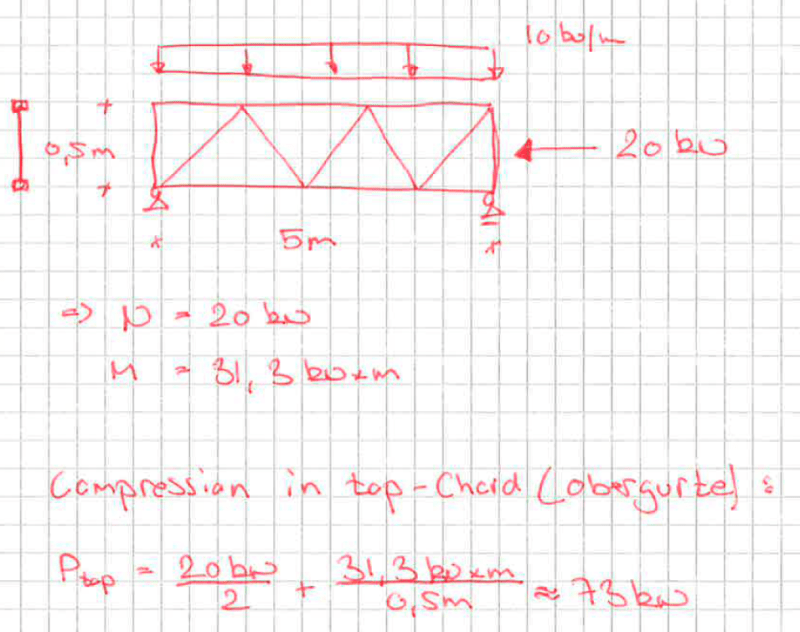chrede
Structural
- Apr 9, 2007
- 7
Hi all
Hopefully you clever guys can help with this topic.
In the old German code DIN 4114 you were allowed to use a so called w-factor(Omega) on compressed members in order to verify the buckling capacity of a steel member. The w-factor depends of the slenderness (schlankheitsgrad) and the material used (werkstoffe).
eg. If you have a w = 5 you multiply that number on your normal force eg. 100 kN which gives 500 kN.. If 500 kN is less than sigma(zul) x A the bucling capacity should be OK.
I have two questions, I hope you can answer:
1: Is that still allowed now days according to Eurocode (DIN/EN)?
2: If I have a truss member (please see attached) with a normal force (N) and a moment (M) and I need to verify the compression chord (obergurte), do I multiply the normal force only with w-factor or shall I do it with both N + M/h?
Eg. in the attached (eg. w-factor is 5):
1. 20 KN x 5 (w-factor) + 31,3 kN*m / 0,5 m = 163 kN or
2. 5 x (20 KN + 31,3 / 0,5 m) = 813 kN.
Thank
 you so much for your help
you so much for your help
Best wishes
Chrede
Hopefully you clever guys can help with this topic.
In the old German code DIN 4114 you were allowed to use a so called w-factor(Omega) on compressed members in order to verify the buckling capacity of a steel member. The w-factor depends of the slenderness (schlankheitsgrad) and the material used (werkstoffe).
eg. If you have a w = 5 you multiply that number on your normal force eg. 100 kN which gives 500 kN.. If 500 kN is less than sigma(zul) x A the bucling capacity should be OK.
I have two questions, I hope you can answer:
1: Is that still allowed now days according to Eurocode (DIN/EN)?
2: If I have a truss member (please see attached) with a normal force (N) and a moment (M) and I need to verify the compression chord (obergurte), do I multiply the normal force only with w-factor or shall I do it with both N + M/h?
Eg. in the attached (eg. w-factor is 5):
1. 20 KN x 5 (w-factor) + 31,3 kN*m / 0,5 m = 163 kN or
2. 5 x (20 KN + 31,3 / 0,5 m) = 813 kN.
Thank

Best wishes
Chrede

![[2thumbsup] [2thumbsup] [2thumbsup]](/data/assets/smilies/2thumbsup.gif)